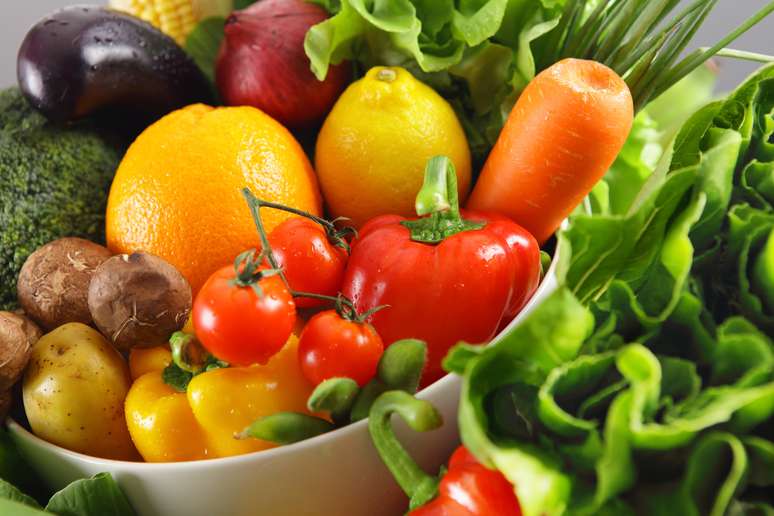Vegetable Handbook: Discover everything about this type of healthy food and consult the experts’ advice
Vegetables are essential and rich in nutrients, important for a balanced diet. In this manual we will explain how to choose and preserve each vegetable, the preparation techniques to preserve vitamins and minerals and suggestions for seasoning combinations.
In addition to being healthy, vegetables are very versatile. They can be used in salads, soups, first courses and side dishes, and prepared in various ways, such as boiled, grilled and roasted.
Made in collaboration with Fabio Stoco, professor of Gastronomic Technology at the Centro Universitário Senac, this guide offers valuable advice on how to use vegetables in your recipes.
Check out the following tips to make the most of these nutritious foods.
What is a vegetable?
The definition is broad, but in gastronomy it refers to a category of vegetables that are consumed in meals and culinary preparations, the main types are:
Root and tuber vegetables: carrots, beets, potatoes, cassava.
Bulb vegetables: Onion, garlic and leek
Fruit Vegetables: Eggplants, Peppers, Cucumbers, Tomatoes, Zucchini
Vegetables with stems and sprouts: fennel, asparagus, celery
How to choose vegetables and identify their freshness and quality?
Professor Fabio Stoco’s advice for choosing the best vegetables is to always opt for seasonal vegetables, as they are easier to find and have a more intense flavor. The appearance and consistency can vary, so it is important to keep these characteristics in mind when choosing the best ones for your recipes with vegetables:
- Potato: It must be firm, without dark spots or soft parts.
- Onion and garlic: firm bulb, uniformly colored skin and no sign of sprouts.
- Tomatoes, aubergines, peppers, courgettes: Smooth and shiny skin, bright and uniform color, avoid softness and wrinkles.
- Fennel and celery: compact consistency and bright green leaves.
- Asparagus: prefer the younger ones (they are thinner), firm and dark green in colour.
- Cauliflower: very white and without dark spots.
How to store vegetables? What is the ideal storage temperature and time?
Vegetables must be sanitized and stored according to their characteristics and/or handling. If they have already been cut and portioned, they must be refrigerated or frozen, always in the packaging that sells the food.
A technique used before freezing vegetables to increase their shelf life and maintain their characteristics is blanching, which consists of immersing the product in boiling water for a few minutes, and then immersing it in iced water.
“We must remember that not all vegetables are best preserved in the refrigerator, as is the case with potatoes, garlic and onions,” says Stoco. As for the temperature, in the refrigerator, which is usually between 7 and 10 degrees, the duration is 4-6 days. In the freezer, where the temperature must be below -18 degrees, vegetables can last up to 30 days.
How to prepare vegetables?
Cooking vegetables is one of the most common methods of preparation. In addition to steaming vegetables, a useful technique is to soak them in boiling water. For green and yellow-orange vegetables, such as broccoli and carrots, cook them in boiling salted water with the pan uncovered; then shock them with ice water to obtain a brighter, more vivid color. For white and red vegetables, such as cauliflower and beets, cook them in boiling water, a little vinegar and salt, and with the pan covered to bring out the color. Other methods include braising, roasting, grilling, and glazing.
How to preserve vitamins and minerals from vegetables?
Steaming is one of the best ways to preserve vitamins and minerals in vegetables. In this method, nutrients remain more intact because the vegetables do not come into direct contact with water, which can remove some of these substances. In addition, the vegetables cook evenly, maintaining their flavor and nutritional value. The same goes for roasted and grilled vegetables, which also help maintain nutritional quality.
How to season vegetables?
Typically, basic seasonings such as garlic, onion, parsley, salt, and black pepper are used in almost all preparations. However, when it comes to vegetables, there are many options for seasoning them. The professor suggests some tasty combinations for seasoning vegetables: for potatoes, try rosemary, paprika, and garlic powder; for broccoli and cauliflower, use fried garlic and lemon zest; for carrots, a mixture of ginger, honey, and brown sugar is perfect; for peppers, opt for oregano and cumin; for zucchini, combine dill and basil; and for tomatoes, use basil and thyme. These combinations can enhance the flavor of vegetables and enhance your recipes.
Recipes with vegetables
Now that you’re inspired, how about trying out some new recipes? Check the connection to discover how to prepare delicious dishes and varied combinations.
Source: Terra
Ben Stock is a lifestyle journalist and author at Gossipify. He writes about topics such as health, wellness, travel, food and home decor. He provides practical advice and inspiration to improve well-being, keeps readers up to date with latest lifestyle news and trends, known for his engaging writing style, in-depth analysis and unique perspectives.









